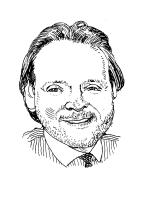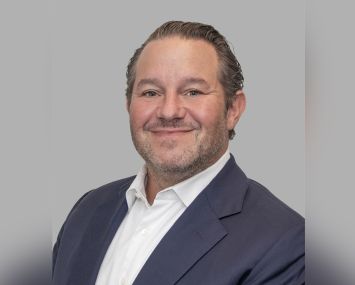 The past two weeks, this column has recapped a speech I gave to the local chapter of the CCIM in late April. The speech was an overview of the lessons that I have learned over my 27-year brokerage career, which includes growing Massey Knakal Realty Services. (Part I here and Part II here)
The past two weeks, this column has recapped a speech I gave to the local chapter of the CCIM in late April. The speech was an overview of the lessons that I have learned over my 27-year brokerage career, which includes growing Massey Knakal Realty Services. (Part I here and Part II here)
This week will conclude the 30 lessons delivered at that speech.
During the history of Massey Knakal, which goes back to 1988, we encountered several inflection points that were critical to the company’s growth. The first came in 1993 and 1994, when the market started to recover after the S&L crisis had slowed the volume of sales activity to miniscule levels and forced property values to plummet.
The way we chose to sell properties in New York was, essentially, to apply an institutional approach to the sector commonly referred to as the “private client” segment of the market, with assets worth between $1 million and $100 million. After very slow sales activity marketwide from 1990 through 1992, we started to see lenders sell properties in large numbers in 1993. This process of distressed asset sales consisted mostly of R.E.O. transactions, as banks had foreclosed on hundreds of properties and were in the process of selling them.
There was some note sale activity at this time, but it was not nearly as prominent as note sale activity has been in this recent cycle. Fortunately, the banks that we were dealing with were attracted to our institutional approach so we were able to secure a significant number of bank-exclusive listings, which brought the company to a different level in terms of our client base and the number of sales we were closing on a monthly basis. This period of 1993 and 1994 was inflection point No. 1 in our development.
During the 1995-to-1998 period, we implemented a plan of slow, steady growth. We would add one or two people per year as we were always very cognizant of wanting to bring on the best quality people rather than a significant number of people. Consequently, the services the company provided were considered excellent by the customers whom we were serving. This slow, steady growth and attention to quality was an important part of our growth. So …
Lesson No. 21:
Strive to be the best, not the biggest.
_______________
Inflection point No. 2 occurred in mid-1998, when each of the territories that we had identified in Manhattan, south of 96th Street, was occupied by a Massey Knakal broker. Paul Massey and I were faced with the question of what to do next. Do we get into other lines of business, such as office leasing and appraisal? Or do we expand our geographic footprint and move into the outer boroughs? We observed that property values were increasing in the neighborhoods outside of Manhattan and, interestingly, most Manhattan brokers did not have any interest working in the outer boroughs.
We made the assumption that if we had gotten into office leasing at that point, we would have been the 100th-best office leasing firm in New York, but if we went to the boroughs to sell buildings, we would be among the leaders in that discipline. In February 1999, we opened our first satellite office in Queens. We believed that we could do a good job selling buildings and saw fundamentals improving in the outer boroughs, making properties there attractive to Manhattan investors. So …
Lesson No. 22:
Maintain your core beliefs while constantly adapting to changing market conditions.
_______________
Inflection point No. 3 for the company came in the fall of 2001, right after Sept. 11. After the terrorist attacks, many companies decided to downsize and we saw a tremendous number of highly qualified people out of work. Paul and I had a deep-seated conviction that New York was resilient, New Yorkers were strong-willed, and that New York would recover and retain its position as the greatest city in the world.
As companies were downsizing and taking cover, we were very contrarian in our thinking. In September 2001, Massey Knakal employed just 21 people. We went out and hired a human resources director and decided to grow the company very significantly to take advantage of all the highly qualified people who had been displaced. Within three years, the firm grew to approximately 200 people.
Until that point, Paul and I had been interviewing every potential candidate for a position at the firm. In fact, we were too hands-on. We had taken turns taking out the garbage from each of our offices. The first four offices we had we painted ourselves, and we moved our office furniture ourselves from one location to the next. It wasn’t until our fifth office location that we actually received cleaning services as part of our rent. We wasted a lot of time doing all of this nonsense. So …
Lesson No. 23:
Be willing to delegate responsibility.
_______________
Post-9/11 was a time of great concern for many people. We had clients who were selling buildings so they could move out of New York because they were afraid of additional attacks. And the bunker mentality was something that was pervasive throughout the city.
In Sun Tzu’s The Art of War, there’s a passage that reads, “If there is one person in 10 with courage, even though the other nine are timid or cowardly [not that our people were], depending on the bravery of that one person, they can still be secure.” It was important for us to demonstrate that we believed everything would be O.K. and that we knew we would prevail regardless of the circumstances in the market at that time. So …
Lesson No. 24:
Have courage and demonstrate it.
_______________
Inflection point No. 4 came in April 2002, when CoStar first published its list of top sales brokerage companies in the city. Our perception was that we were doing a good job and were selling a lot of buildings, but we were very pleasantly surprised to see that we were at the top of the list in terms of number of property sale transactions in New York City.
That gave us a significant amount of confidence and, based upon the tremendous job that our H.R. director was doing, we decided (although we were concerned that we couldn’t comfortably afford it) to bring on an entire C-level executive team, including a C.F.O., a C.O.O., a V.P. of corporate services, a C.T.O., a director of marketing and managing directors. The delegation of responsibility to these C-level managers helped accelerate the growth of the firm. So …
Lesson No. 25:
Hire more help than you think you can afford provided the risk/return trade-off makes sense.
_______________


